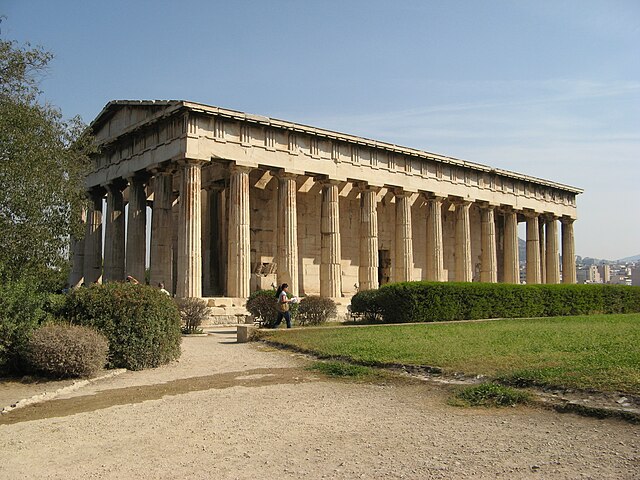Athenian democracy developed around the 6th century BC in the Greek city-state of Athens, comprising the city of Athens and the surrounding territory of Attica. Although Athens is the most famous ancient Greek democratic city-state, it was not the only one, nor was it the first; multiple other city-states adopted similar democratic constitutions before Athens. By the late 4th century BC, as many as half of the over one thousand existing Greek cities might have been democracies. Athens practiced a political system of legislation and executive bills. Participation was open to adult, free male citizens The metics probably constituted no more than 30 percent of the total adult population.
The relief representation depicts the personified Demos being crowned by Democracy. About 276 BC. Ancient Agora Museum.
Cleisthenes
The Constitution of Athens by Aristotle that details the constitution of Classical Athens.
Bust of Pericles, marble Roman copy after a Greek original from c. 430 BC
The city of Athens during the classical period of ancient Greece was the major urban centre of the notable polis (city-state) of the same name, located in Attica, Greece, leading the Delian League in the Peloponnesian War against Sparta and the Peloponnesian League. Athenian democracy was established in 508 BC under Cleisthenes following the tyranny of Isagoras. This system remained remarkably stable, and with a few brief interruptions remained in place for 180 years, until 322 BC. The peak of Athenian hegemony was achieved in the 440s to 430s BC, known as the Age of Pericles.
Early Athenian coin, 5th century BC. British Museum.
The modern National Academy in Athens, with Apollo and Athena on their columns, and Socrates and Plato seated in front.
The Acropolis imagined in an 1846 painting by Leo von Klenze
The Temple of Hephaestus in modern-day Athens








